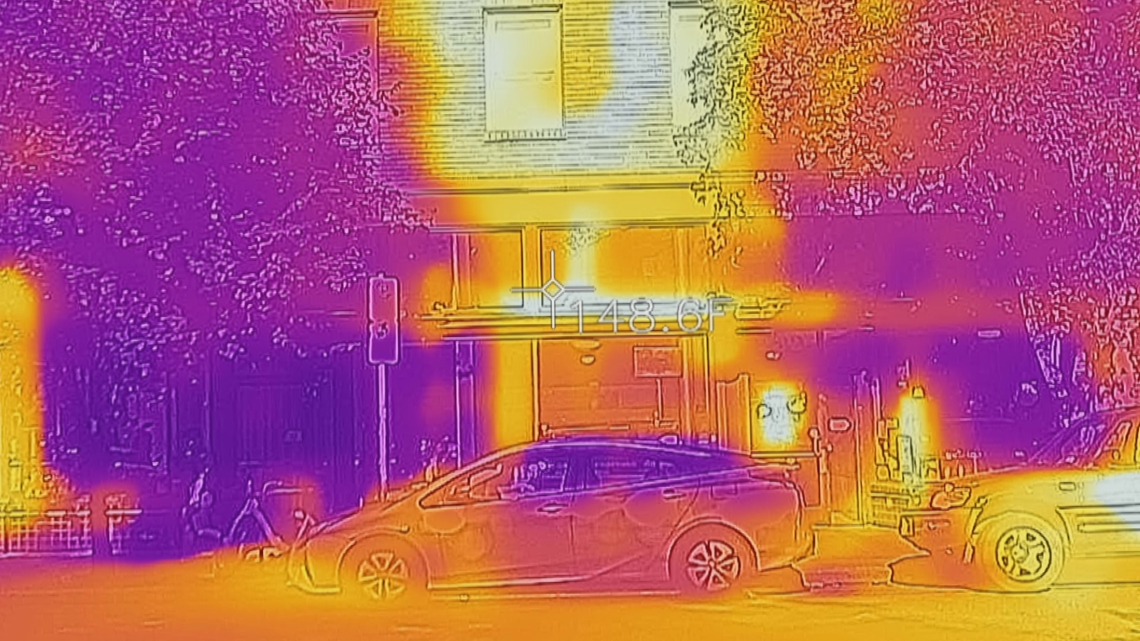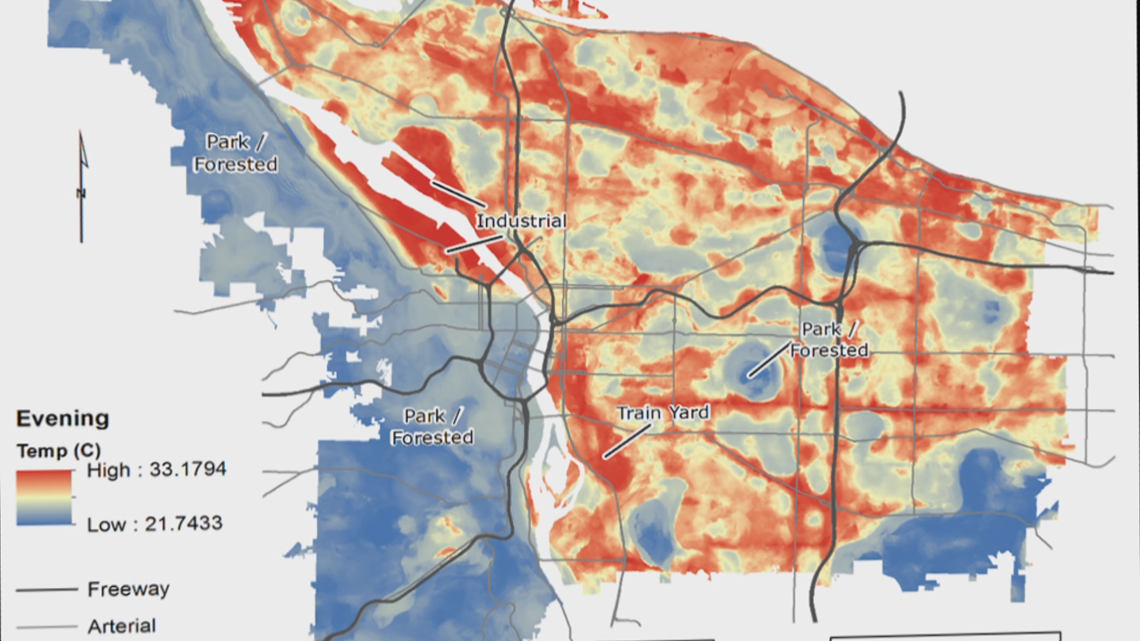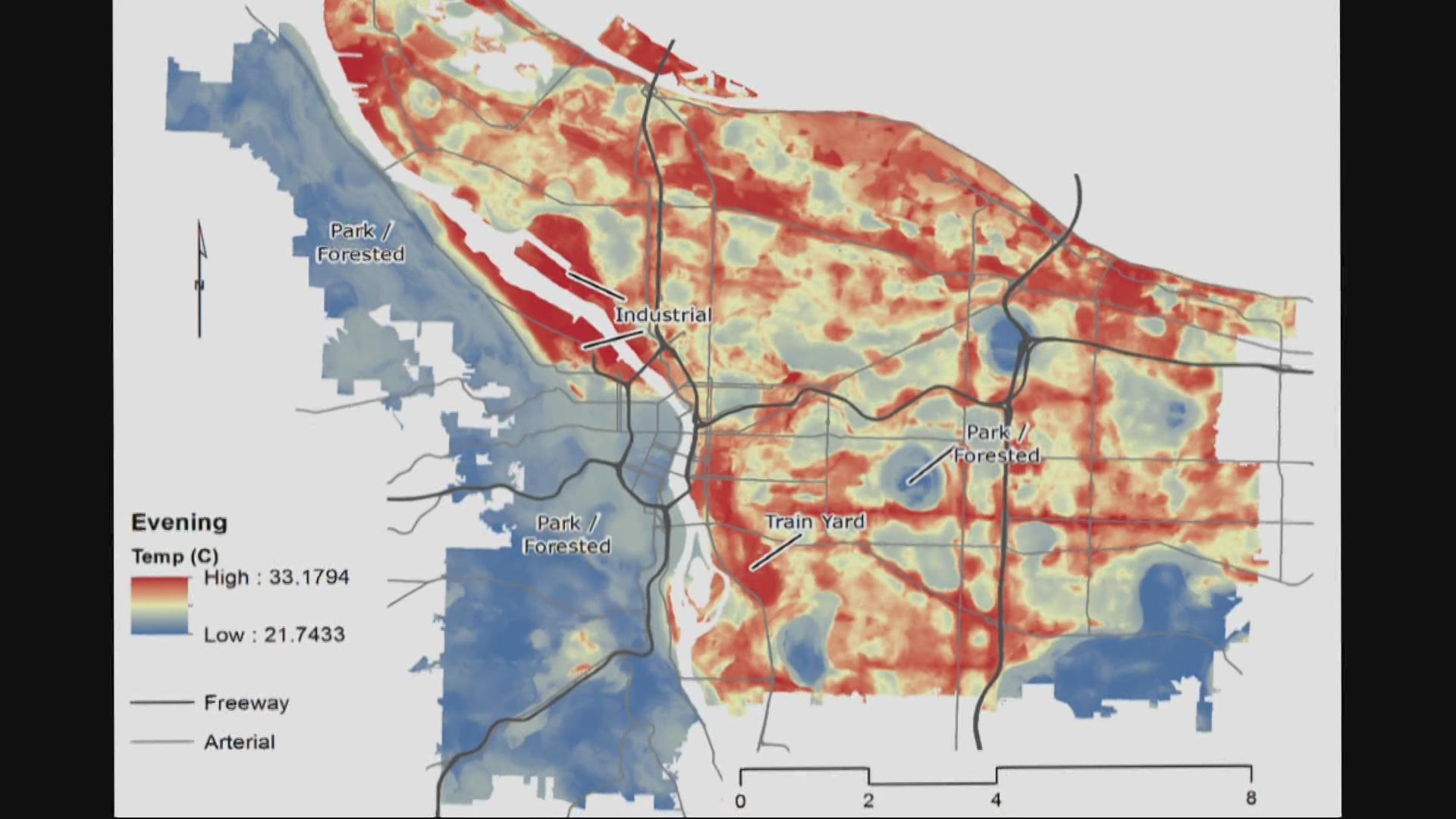PORTLAND, Ore. — Cities are almost always hotter than the rural areas around them, a concept known as an "urban heat island," and the temperature at one point in a city can vary widely from another.
Portland State University professor Dr. Vivek Shandas studies urban heat islands in Portland, taking temperature readings around the city to see which areas get hotter.
How hot a building gets, Dr. Shandas said, depends greatly on how the building is built, as well as its surroundings.
"Sometimes you'll find buildings that are very low-slung, warehouse-type buildings — those tend to be directly exposed," said Shandas. "All of the walls, all of the roof, all of that surrounding parking lot is continuously absorbing heat, and so you see this real amplifying effect from the sun in and around those low-slung buildings."


Parking lots and major roads play a big role in how hot an area will get. The more asphalt nearby, the more heat is being absorbed in that area.
"It's black, it's dense, it absorbs heat, it's often very exposed to the sun," Shandas said of asphalt. "It's absorbing heat all day long, it retains that heat, and then as the nighttime temperature cools, it tries to let go and essentially moves that hot air from that hot asphalt into the ambient environment."
Often, Shandas said, the asphalt can't let go of all the heat it has absorbed overnight and starts heating up again as soon as the sun comes up.
"You see this [heat] amplifying effect in areas that have a lot of large, open, exposed black parking lots, as well as large freeway complexes and roadway structures."


On hot days, downtown Portland starts out among the warmest areas of the city, but as the day goes on the east side sees the hottest temperatures.
"Any freeway we have in the region, like I-5, I-205, 84, 26, even bigger boulevards like Sandy or Powell Boulevard or Foster, these are areas that are just very exposed," he said. "What we see is that solar radiation really affecting those particular corridors very intensely."


The west side of the city fares better temperature-wise because, in part, of the tree cover. There is more shade and more natural areas on the west side of the Willamette.
People living in high-rise apartments also have another force working against them: heat rises. Anyone hoping to stay cool indoors will have a better chance on the ground floor than several floors up.
"Often what we end up seeing is that apartments in the upper floors of a building are sometimes 30 degrees hotter than the bottom floors of that structure," said Shandas.
Shandas thinks the city should consider these factors when developing.
"It would really be a model for the entire country if the Portland metro region could create a set of building codes that would actually be heat-mitigating building codes," he said. "Whether it be coloring, specific types of materials, a certain geometry or orientation that would allow us to reduce those temperatures and actually ameliorate some of that heat."

